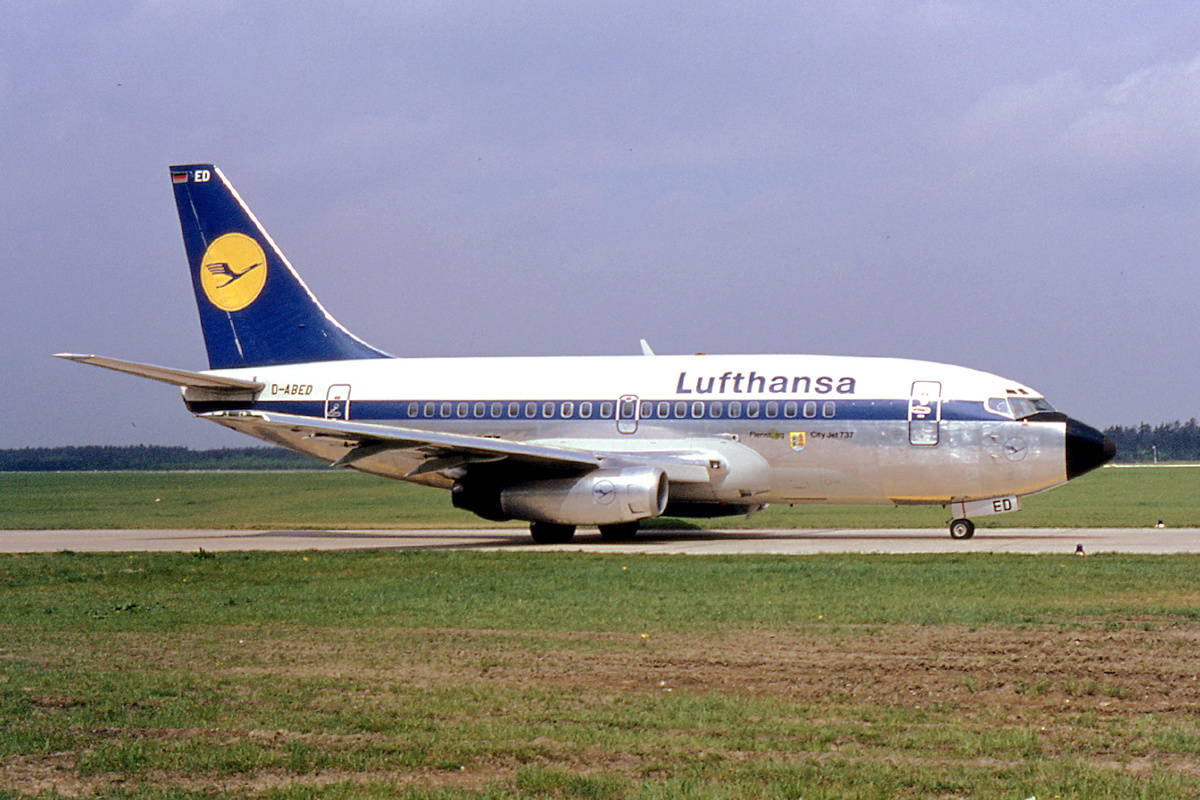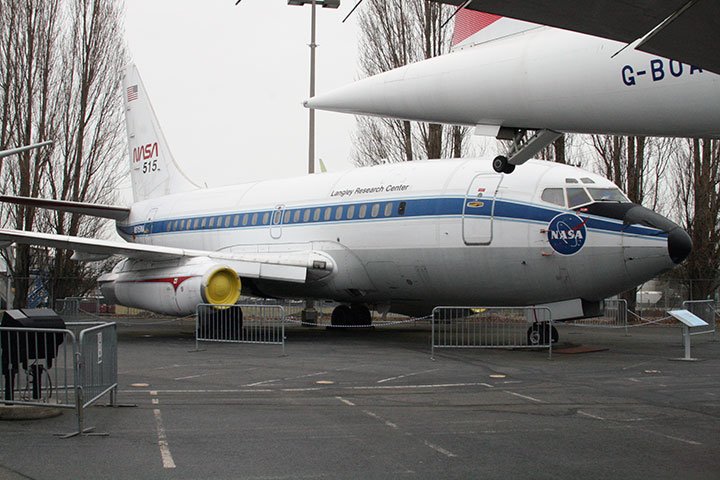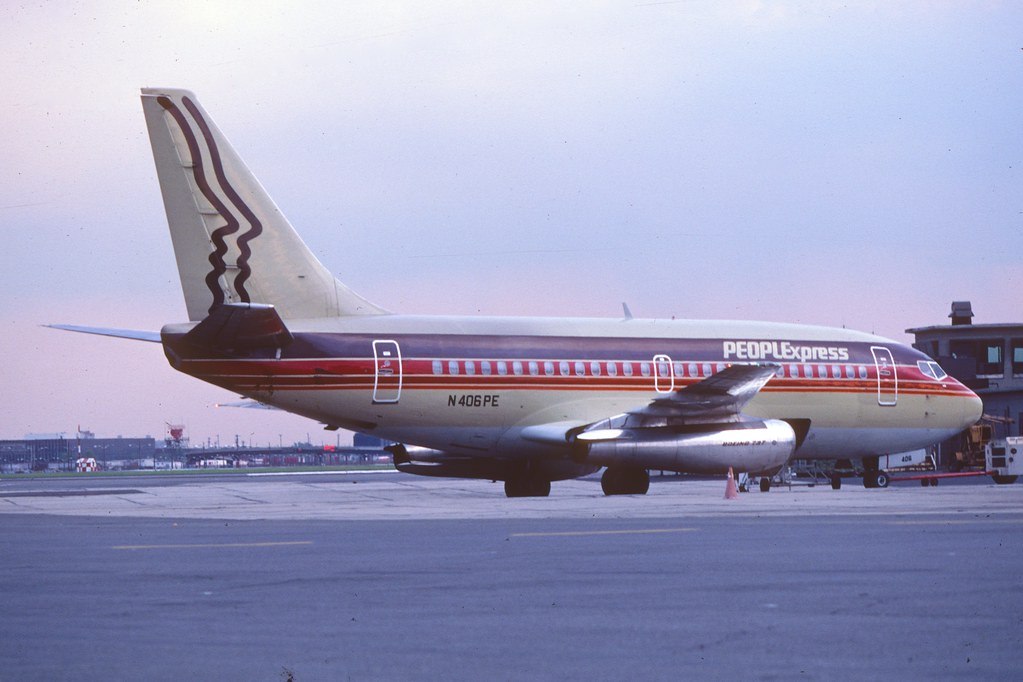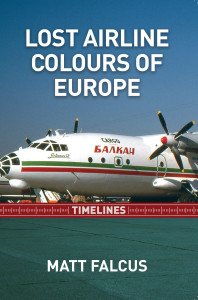In the early days of jet airliners, manufacturers were turning out new types at a steady pace.
Following the first batch of types, like the de Havilland Comet, Boeing 707, Douglas DC-8 and Caravelle, Boeing came along with the 727.
This type proved very popular, but not long after it sought to produce a twin-engine jet airliner with a smaller capacity believing this would prove popular on shorter routes between major cities.
The result was the Boeing 737 – a 100-seat airliner with two engines slung underneath the wings. This had evolved from an initial design with a T-tail, carrying 50-60 passengers.
The 737 came along at a time when rivals Douglas were producing the DC-9, and the British Aircraft Corporation were producing the One-Eleven – both similar twin-jet airliners aimed at the same market.
First Flight

The Boeing 737 project was able to proceed based on an order from Lufthansa.
The German national airline signed a commitment to 21 aircraft, worth $67 million, on 1 February, 1965, and production went ahead as a result.
It was Lufthansa who persuaded Boeing to increase the capacity of the airliner to 100 seats.
The first flight of the Boeing 737 took place at Renton, WA, on 9 April, 1967. By this point, United Airlines had also placed an order for 40 aircraft, but with an increased capacity; this became the slightly larger 737-200.
Lufthansa 737-100 Service

The first Lufthansa Boeing 737-100 arrived on 28 December 1967, and entered service in February 1968.
Lufthansa’s plans for its 737-100s were to fly on domestic sectors, replacing older piston types like the Lockheed Constellation.
The plan slightly backfired, with the new aircraft proving so popular that flights were usually oversubscribed and operating full, meaning the airline had to double its schedules, or find larger aircraft to operate the routes instead.
Over the next 15 years, the type was used on a variety of domestic and European services, and became a common sight.
Lufthansa 737-100 Fleet
- D-ABEA (19013/2)
- D-ABEB (19014/3)
- D-ABEC (19015/4)
- D-ABED (19016/5)
- D-ABEF (19017/7)
- D-ABEG (19018/9)
- D-ABEH (19019/10)
- D-ABEI (19020/11)
- D-ABEK (19021/15)
- D-ABEL (19022/17)
- D-ABEM (19023/23)
- D-ABEN (19024/26)
- D-ABEO (19025/32)
- D-ABEP (19026/35)
- D-ABEQ (19027/52)
- D-ABER (19028/98)
- D-ABES (19029/108)
- D-ABET (19030/113)
- D-ABEU (19031/118)
- D-ABEV (19032/119)
- D-ABEW (19033/120)
- D-ABEY (19794/127)
End of Service
Lufthansa loved its Boeing 737-100s and it began a long affair with the type.
The airline soon ordered almost 50 of the larger 737-200 variants which gave capacity for up to 130 passengers, and better suited demand on its routes (Lufthansa also operated larger Boeing 727 aircraft). The first arrived in 1969.
The airline also later ordered the Boeing 737-300, -400 and -500 variants, which each offered varying capacities, and benefited from the latest in technology and efficiencies.
The 737-100 fleet would continue in service, however, until the last retired in 1982.
Eventually, however, Lufthansa began the process of procuring a large fleet of Airbus A320 family aircraft which, by the mid-2010s, would completely replace the Boeing 737s.
Lufthansa 737-100 Survivors

Boeing 737-100 prototype at the Museum of Flight in Seattle.
There were only 30 Boeing 737-100s produced, of which 22 went to Lufthansa.
Following service, many went on to operate in the second-hand market with various other airlines around the world, like People Express.
However, at the time of writing, all have been scrapped apart from the prototype which is on display at the Museum of Flight in Seattle. It is not a former Lufthansa machine.
 Lost Airline Colours of Europe
Lost Airline Colours of Europe
Our book, Lost Airline Colours of Europe, is a trip down memory lane of the former airlines and colour schemes once seen across Europe. It includes scenes you’ll never see again, and plenty of older types like the Caravelle, Trident, 727 and Lufthansa 737-100.
Order Your Copy Here








1 comment
I remember seeing my first LH 737-100 at LHR in Nov 1968 D-ABEB, followed by three others over the next few months.
Three of them were sold to ANSETT NZ in 1987 and retired in late 1989. I photographed the three of them at Marana in 1993, before they were scrapped.